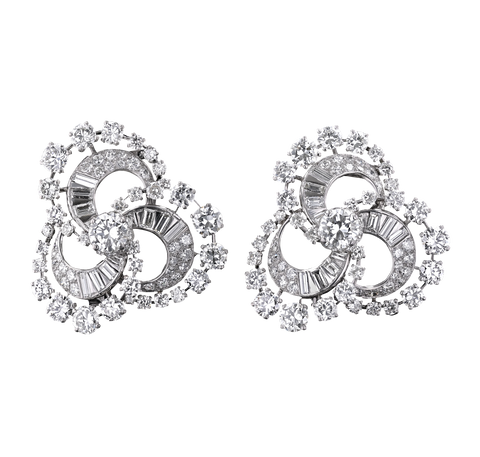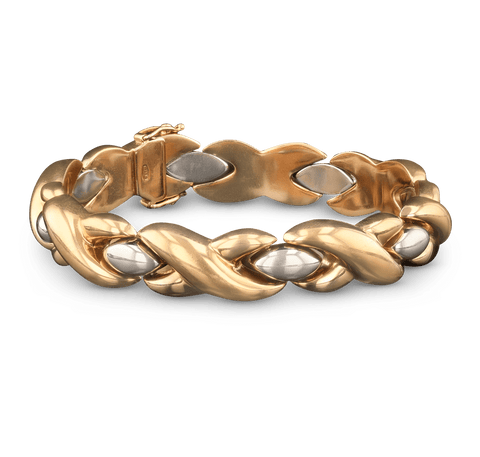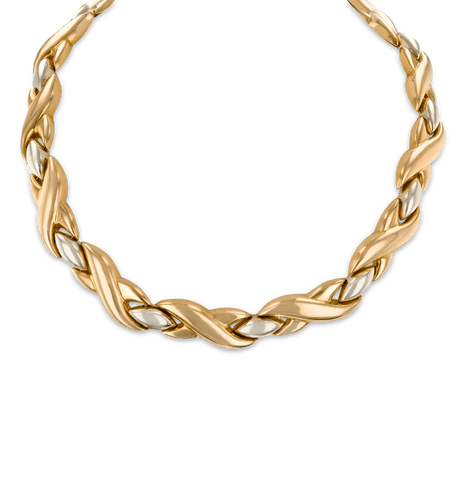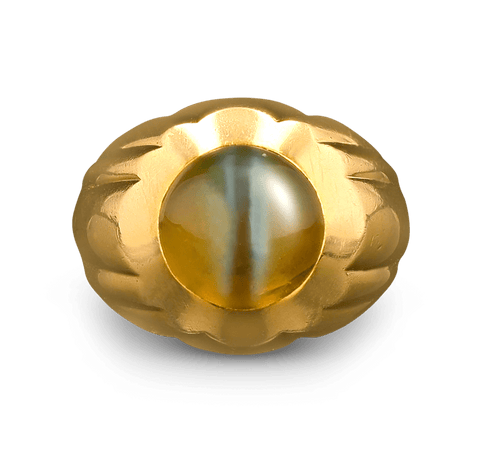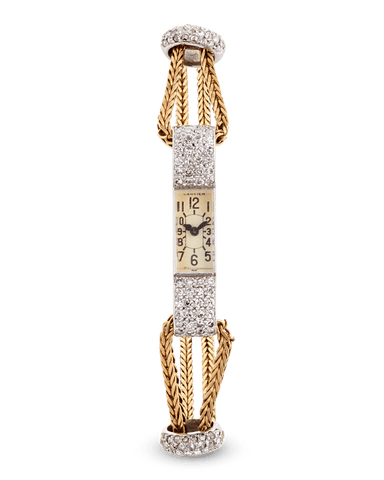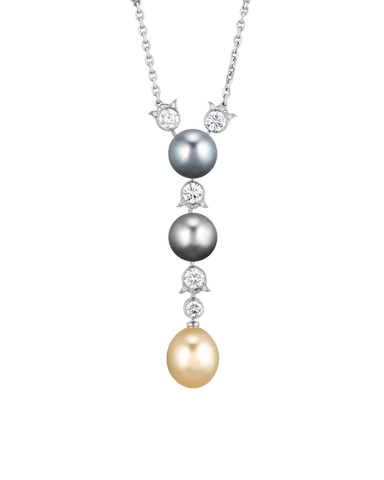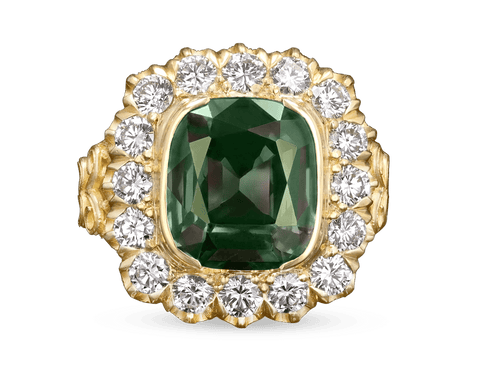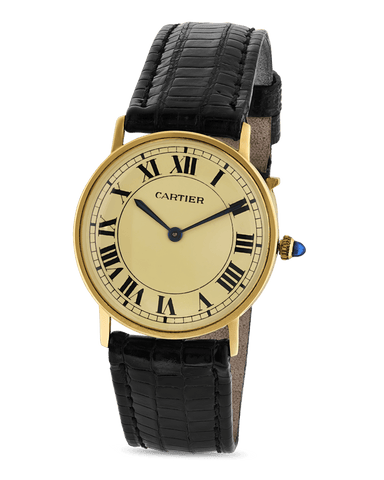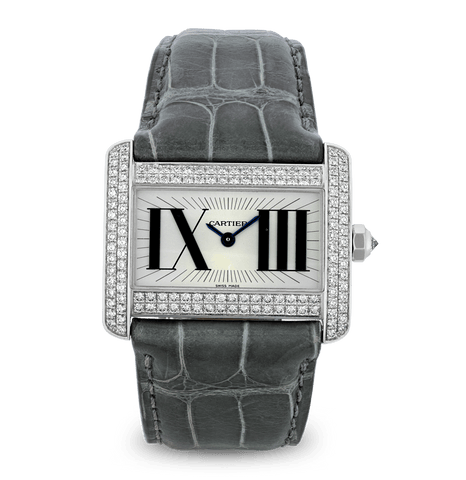Artists & Artisans
Cartier
Founding an Empire
Cartier, the esteemed luxury jewelry firm, was established in 1847 by Louis-François Cartier in Paris. Despite the formidable obstacles faced during the tumultuous period of the Second French Revolution, Cartier managed to navigate the challenges and ensure the continuity of his business. This resilience laid the foundation for the company's growth, and in 1859, the first Cartier boutique opened.
Second Generation
In 1874, Alfred Cartier, the son of Louis-François, assumed control of the company, bringing with him a keen business acumen that propelled the business to new heights. Alfred's astute strategies played a crucial role in establishing the Cartier brand as a favorite among Europe's royal families. Notably, King Edward VII of England became a prominent client, purchasing an impressive 27 tiaras in 1902. These prestigious acquisitions were followed by similar commissions from esteemed individuals and royal families such as the royal Portuguese, Spanish, Serbian and Russian crowns, as well as the House of Orleans. As a result, Cartier solidified its position as the foremost jeweler for discerning individuals who sought the pinnacle of luxury and elegance.
Third Generation
While Alfred played a significant role in propelling the business forward, it was his sons—Louis, Jacques and Pierre—who truly propelled Cartier to become a global enterprise. From an early age, the three brothers were well aware that they would inherit their father's company, and as a result, they diligently observed and studied the intricacies of the business, aspiring to steward it in the future. Their unwavering commitment and meticulous attention to detail laid the groundwork for Cartier's expansion into further success.
Louis, in his role as head of Cartier's Paris branch, made significant contributions to the company's legacy. In 1899, he relocated the headquarters to Rue de la Paix, a move that would prove instrumental in the brand's development. Louis is credited with creating some of Cartier's most iconic works, including the renowned mystery clocks, stylish pocket watches and numerous Art Deco designs.
In 1904, Louis seized an opportunity presented by Brazilian pioneer aviator Alberto Santos-Dumont. The pilot expressed dissatisfaction with the impracticality of traditional watches for flying. Recognizing the potential, Louis Cartier commissioned the first Cartier men's wristwatch, aptly named the Santos. The innovative timepiece featured a sleek and flat design with a square bezel. The Santos watch quickly garnered favor among its namesake Santos-Dumont, as well as many other notable clients, cementing its place as an iconic innovation in Cartier's storied history.
Global Expansion
In 1909, Cartier made a significant expansion by establishing its New York branch. The company acquired a magnificent mansion as its base of operations, completing the purchase with an intriguing exchange: $100 in cash and a remarkable pearl necklace worth $1,000,000. The mansion was previously owned by Morton Freeman Plant, the affluent son of a railroad tycoon. This strategic move firmly established Cartier's presence in the United States, which had become the center of global finance and manufacturing.
Luxurious Innovation
Following the destructive aftermath of World War I in 1919, Cartier introduced their iconic Tank wristwatches. Inspired by the revolutionary military tanks that emerged during the war, these timepieces captivated enthusiasts with their distinct design. The Tank watches embodied a blend of strength, elegance and precision, reflecting the resilience and innovation that characterized the post-war era. The introduction of the Tank collection further solidified Cartier's reputation as a pioneer in watchmaking and a purveyor of enduring style.
Future of the Firm
Following the passing of Pierre Cartier in 1964, the last of Alfred Cartier's original sons, the business underwent a change in ownership. In 1972, Robert Hocq, along with a group of investors, acquired the company, marking a new chapter in Cartier's storied history. In 1979, all Cartier interests were consolidated under the umbrella of "Cartier Monde," bringing together various facets of the brand's operations.Although Cartier is no longer a family-run company as it once was, the jeweler’s commitment to crafting exceptional pieces remains unwavering. Even under new ownership, Cartier continues to produce some of the world's finest and most exquisite creations, maintaining its position as a symbol of luxury and wealth. The name Cartier remains synonymous with exceptional craftsmanship and timeless elegance. As the brand looks to the future, it is poised to build upon its rich history, promising a future that is even more prosperous and illustrious.
Quick Facts:
-
Cartier was the first jeweler to successfully use platinum in jewelry-making.
-
Cartier developed a new gem-setting technique for its Panthere design to resemble the texture of fur.
-
Cartier has been featured in many films, including Breakfast at Tiffany's, James Bond movies and The Pink Panther.
-
Michelle Obama was spotted wearing a Cartier Tank Française watch in her official portrait as the First Lady of the United States.
-
Kate Middleton has been known to wear a Cartier Ballon Bleu watch.
Artists & Artisans
Cartier
Founding an Empire
Cartier, the esteemed luxury jewelry firm, was established in 1847 by Louis-François Cartier in Paris. Despite the formidable obstacles faced during the tumultuous period of the Second French Revolution, Cartier managed to navigate the challenges and ensure the continuity of his business. This resilience laid the foundation for the company's growth, and in 1859, the first Cartier boutique opened.
Second Generation
In 1874, Alfred Cartier, the son of Louis-François, assumed control of the company, bringing with him a keen business acumen that propelled the business to new heights. Alfred's astute strategies played a crucial role in establishing the Cartier brand as a favorite among Europe's royal families. Notably, King Edward VII of England became a prominent client, purchasing an impressive 27 tiaras in 1902. These prestigious acquisitions were followed by similar commissions from esteemed individuals and royal families such as the royal Portuguese, Spanish, Serbian and Russian crowns, as well as the House of Orleans. As a result, Cartier solidified its position as the foremost jeweler for discerning individuals who sought the pinnacle of luxury and elegance.
Third Generation
While Alfred played a significant role in propelling the business forward, it was his sons—Louis, Jacques and Pierre—who truly propelled Cartier to become a global enterprise. From an early age, the three brothers were well aware that they would inherit their father's company, and as a result, they diligently observed and studied the intricacies of the business, aspiring to steward it in the future. Their unwavering commitment and meticulous attention to detail laid the groundwork for Cartier's expansion into further success.
Louis, in his role as head of Cartier's Paris branch, made significant contributions to the company's legacy. In 1899, he relocated the headquarters to Rue de la Paix, a move that would prove instrumental in the brand's development. Louis is credited with creating some of Cartier's most iconic works, including the renowned mystery clocks, stylish pocket watches and numerous Art Deco designs.
In 1904, Louis seized an opportunity presented by Brazilian pioneer aviator Alberto Santos-Dumont. The pilot expressed dissatisfaction with the impracticality of traditional watches for flying. Recognizing the potential, Louis Cartier commissioned the first Cartier men's wristwatch, aptly named the Santos. The innovative timepiece featured a sleek and flat design with a square bezel. The Santos watch quickly garnered favor among its namesake Santos-Dumont, as well as many other notable clients, cementing its place as an iconic innovation in Cartier's storied history.
Global Expansion
In 1909, Cartier made a significant expansion by establishing its New York branch. The company acquired a magnificent mansion as its base of operations, completing the purchase with an intriguing exchange: $100 in cash and a remarkable pearl necklace worth $1,000,000. The mansion was previously owned by Morton Freeman Plant, the affluent son of a railroad tycoon. This strategic move firmly established Cartier's presence in the United States, which had become the center of global finance and manufacturing.
Luxurious Innovation
Following the destructive aftermath of World War I in 1919, Cartier introduced their iconic Tank wristwatches. Inspired by the revolutionary military tanks that emerged during the war, these timepieces captivated enthusiasts with their distinct design. The Tank watches embodied a blend of strength, elegance and precision, reflecting the resilience and innovation that characterized the post-war era. The introduction of the Tank collection further solidified Cartier's reputation as a pioneer in watchmaking and a purveyor of enduring style.
Future of the Firm
Following the passing of Pierre Cartier in 1964, the last of Alfred Cartier's original sons, the business underwent a change in ownership. In 1972, Robert Hocq, along with a group of investors, acquired the company, marking a new chapter in Cartier's storied history. In 1979, all Cartier interests were consolidated under the umbrella of "Cartier Monde," bringing together various facets of the brand's operations.Although Cartier is no longer a family-run company as it once was, the jeweler’s commitment to crafting exceptional pieces remains unwavering. Even under new ownership, Cartier continues to produce some of the world's finest and most exquisite creations, maintaining its position as a symbol of luxury and wealth. The name Cartier remains synonymous with exceptional craftsmanship and timeless elegance. As the brand looks to the future, it is poised to build upon its rich history, promising a future that is even more prosperous and illustrious.
Quick Facts:
-
Cartier was the first jeweler to successfully use platinum in jewelry-making.
-
Cartier developed a new gem-setting technique for its Panthere design to resemble the texture of fur.
-
Cartier has been featured in many films, including Breakfast at Tiffany's, James Bond movies and The Pink Panther.
-
Michelle Obama was spotted wearing a Cartier Tank Française watch in her official portrait as the First Lady of the United States.
-
Kate Middleton has been known to wear a Cartier Ballon Bleu watch.
